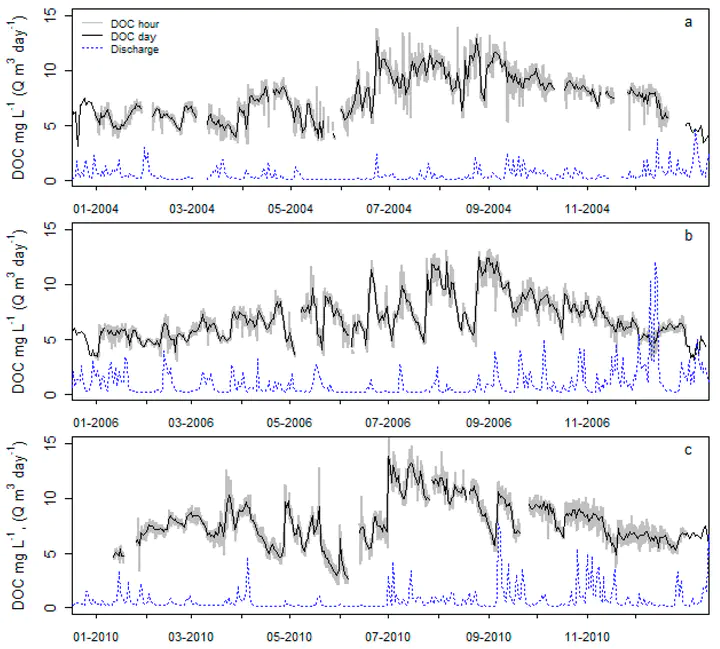From Highs to Lows: Changes in Dissolved Organic Carbon in a Peatland Catchment and Lake Following Extreme Flow Events
 Estimated mean hourly (grey) and daily (black) DOC concentrations and stream discharge (Q) (m3 s−1) for the Glenamong River.
Estimated mean hourly (grey) and daily (black) DOC concentrations and stream discharge (Q) (m3 s−1) for the Glenamong River.
Abstract
The concentration of dissolved organic carbon (DOC) in freshwater catchments has implications for carbon availability in downstream lakes and for water supplies. The links between catchment hydrology and stream and lake DOC concentrations are, however, still not fully understood. Much of the literature has been from catchments with organo-mineral soils, with fewer studies from upland peat sites. We used high-frequency fluorescence data, a proxy for DOC, to investigate 1. the relationship between stream discharge and concentration in a blanket peat catchment during extreme high flows and 2. the relationship between inflow and in-lake estimated DOC concentrations. We found that for approximately two thirds of extreme events, there was a decrease in stream DOC concentration (i.e., a dilution) on the rising limb rather than an increase (i.e., a flushing out of DOC from terrestrial stores). Flushing events dominated only in summer when concentrations in the stream were also increasing. In comparison to the stream, concentrations in the downstream lake were less variable, and peaks and troughs were damped and lagged. Replicating these patterns and processes in DOC models would be critical in order to provide appropriate simulations in response to shorter- and longer-term changes in climate, and thus inform future catchment and lake management.